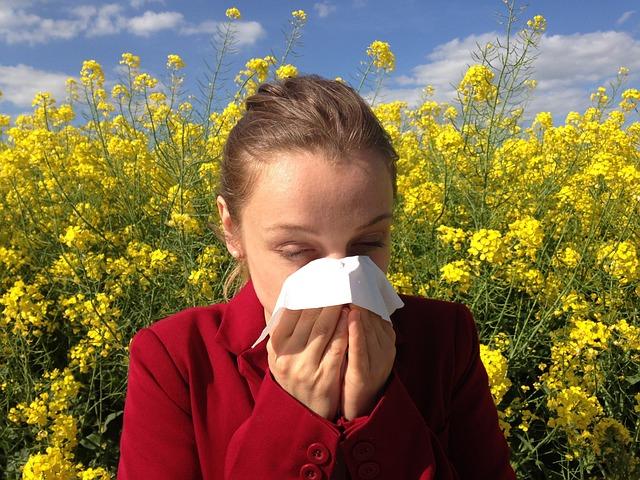As the vibrant colors of spring emerge or the crisp air of autumn settles in, the changing seasons can be a beautiful spectacle for us to enjoy. However, for our furry companions, these transitions often bring more than just new scents and sights—they can also usher in a wave of seasonal allergies. Just like humans, dogs can experience discomfort and irritation from allergens present in the environment. Understanding how to protect your beloved pet from these seasonal nuisances is essential to ensuring their comfort and well-being. In this article, we’ll explore practical and effective strategies to safeguard your dog against seasonal allergies, helping them to enjoy each season to its fullest, free from the itch and irritation that allergies can bring.
Understanding Seasonal Allergies in Dogs
Dogs, much like humans, can suffer from seasonal allergies, which are often triggered by environmental factors such as pollen, mold, and dust mites. These allergens can cause discomfort and lead to symptoms such as itching, redness, and sneezing. Recognizing the signs early is crucial for ensuring your furry friend stays comfortable. Common symptoms include:
- Excessive scratching or licking
- Red or inflamed skin
- Watery eyes
- Runny nose
- Ear infections
To help alleviate these symptoms, it is important to keep your dog’s environment clean and free of allergens. Regular grooming can remove pollen and other irritants from their coat, while washing their bedding frequently will help minimize exposure to dust mites. Consider using air purifiers to improve indoor air quality. If symptoms persist, consult with a veterinarian for potential treatments such as antihistamines or specialized shampoos. By staying proactive, you can help your dog enjoy the seasons without the discomfort of allergies.
Creating a Safe and Allergy-Free Home Environment
To ensure your furry friend is comfortable during allergy season, it’s crucial to maintain a home environment that minimizes allergens. Start by implementing a regular cleaning routine. Vacuuming frequently with a HEPA filter vacuum can significantly reduce pollen, dust mites, and other allergens that settle into carpets and upholstery. For hardwood floors and tiles, a damp mop is your best friend to pick up any particles that might cause irritation.
Consider setting up an air purifier in common areas to trap airborne allergens. Bathing your dog weekly with hypoallergenic shampoo can also help remove pollen and other irritants from their coat. Create a barrier against allergens by washing your pet’s bedding in hot water and using allergy-proof covers. Additionally, a designated grooming area with easy-to-clean surfaces can prevent allergens from spreading throughout your home.
- Use pollen-free plants for indoor decoration to prevent adding more allergens to the air.
- Establish a shoe-free zone to prevent tracking outdoor allergens inside.
- Incorporate natural cleaning products that are free from harsh chemicals.
These steps will create a haven for your dog, helping them breathe easier and enjoy the changing seasons without discomfort.
Dietary Adjustments to Boost Your Dogs Immunity
When it comes to safeguarding your furry friend from the discomfort of seasonal allergies, a few thoughtful changes in their diet can make a world of difference. Incorporating immune-boosting foods into your dog’s meals can enhance their body’s natural defenses. Consider adding a small amount of cooked, unseasoned fish like salmon or sardines, which are rich in omega-3 fatty acids. These can help reduce inflammation and support overall immune health. Additionally, include a variety of fresh vegetables such as carrots, sweet potatoes, and spinach. These are packed with essential vitamins and antioxidants that can bolster your dog’s immune system.
Probiotics are another powerful addition to your dog’s diet. They promote a healthy gut, which is crucial for a robust immune system. You can find dog-specific probiotic supplements or offer small servings of plain, unsweetened yogurt. It’s also beneficial to explore herbal supplements like spirulina or echinacea, known for their immune-enhancing properties. Always consult your veterinarian before introducing new foods or supplements to ensure they’re safe and appropriate for your pet. By making these dietary adjustments, you’re not just addressing allergies but also paving the way for your dog’s overall well-being.
Natural Remedies and Treatments for Canine Allergies
For those furry friends battling seasonal sniffles, nature offers a comforting array of remedies. Start with a diet rich in omega-3 fatty acids, which are known to reduce inflammation and bolster the immune system. Foods like fish oil or flaxseed oil can be added to their meals. Quercetin, often dubbed as nature’s Benadryl, is a powerful antioxidant found in apples and green tea, and can help alleviate allergic reactions.
Incorporating regular baths with hypoallergenic shampoos can wash away pollen and allergens from your dog’s coat. Consider using aloe vera or chamomile rinses to soothe irritated skin. Additionally, a gentle wipe-down with a damp cloth after outdoor play can prevent allergens from spreading in your home. Lastly, introducing local honey in small amounts might help build resistance to local pollen. Always consult with your vet before trying new treatments to ensure they suit your dog’s specific needs.

